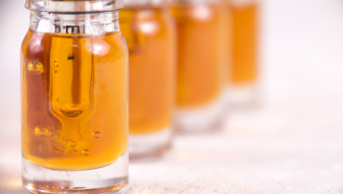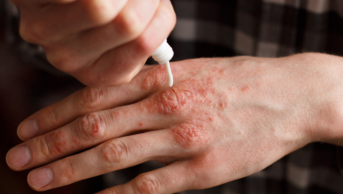
Shutterstock.com
Community pharmacists could play an increased role in raising awareness about the risks of epilepsy drug sodium valproate in women of childbearing age, according to the Pharmaceutical Group of the European Union (PGEU) which represents community pharmacists.
Speaking at the first public hearing into the safety of the drug, Jurate Svarcaite, from the PGEU, said medicines use reviews (MURS) and the new medicine service (NMS), already available in some European countries, provide the perfect opportunity to discuss risks and benefits of the medicine.
Svarcaite told the hearing, which was held by the European Medicines Agency (EMA), in London, that the PGEU had produced a best practice paper detailing how pharmacists could help ensure safe, effective and rational use of medicines in practice.
But she also stressed that valproate could never be prescribed ‘risk free’ because “for some patient groups there is no alternative [drug] and sometimes pregnancy happens without planning.”
She said: “Our role is to raise awareness to women of childbearing age who are using valproate.”
She suggested that technology at the point of prescribing or dispensing could also be better used to get the risk message across to women and also put forward the idea that more health professionals — which would include pharmacists — should be members of the EMA’s Pharmacovigilance Risk Assessment Committee (PRAC) in order to “talk about issues like this.”
The public hearing is the first of its kind to be held by the EMA and is part of its ongoing review into the safety of valproate-containing medicines which are widely available across the European Union (EU) for the treatment of epilepsy, bipolar disease and migraine.
The hearing focused on three issues — the risks associated with valproate during pregnancy and its potential risks to the unborn child, the current measures in place to reduce risks, and what else needs to be done to reduce risk.
Women from across the EU told the hearing they had been kept in the dark about the risks the drug posed to their unborn child and spoke emotionally about the impact it had had on them and their children.
There were calls for a national register of all women of childbearing age taking valproate, with another register for children who have suffered from the impact of the drug.
A pictorial symbol of a pregnant woman with a red line drawn across it should also appear on drug boxes in the UK — similar to the one being called for in France, it was suggested.
And the charity Epilepsy Society UK suggested that GPs should hold a face-to-face consultation with a woman prescribed valproate every 12 months to discuss the risks of the drug to her unborn child.
Karen Keely, from the FACS Forum Ireland, told the hearing: “This is an important and emotional day for me. I have three adult children who have been affected by exposure to valproate. We are living evidence of the risks and developmental impacts of this medicine.
“Two of my adult children require life-long care and will never be able to have a normal life, never be able to have children. They have been robbed of the joy of life.”
Marine Martin, from the Association of Parents of Children with the anticonvulsant syndrome (APESAC) in France told the hearing that 1,500 families were involved in legal action over the drug and the organisation was also pushing for the French government to hold a public inquiry.
Catherine Cox, from the Fetal Anti-Convulsant Support Association UK, said the risks of valproate to the unborn child had been known for decades.
According to the Medicines and Healthcare products Regulatory Agency, sodium valproate carries a 10% risk of physical abnormalities in unborn babies. Babies exposed to the drug in the womb also have a 40% risk of developing autism, low IQ and learning disabilities, it says.
Its current advice is that valproate should not be used in female children, in female adolescents, in women of childbearing potential and in pregnant women, unless it is the only option. Women of childbearing age must use effective contraception during treatment. Women taking valproate must also have regular reviews of their treatment, it says.
It is believed that around 20,000 babies in the UK alone have been left with disabilities since valproate was introduced in the 1970s.
Ahead of the public hearing, epilepsy patient charities, including the Epilepsy Society, Epilepsy Action and Young Epilepsy, published the results of a survey which showed that almost 70% of women who were given valproate to treat their epilepsy had not received new UK safety warnings about the dangers of taking it during pregnancy.
Of the more than 2,000 girls and women with epilepsy aged under 50 years, 26% were currently taking sodium valproate but 18% of these did not know of the potential risks of taking it during pregnancy, the survey revealed.
Almost a quarter (23%) of women taking sodium valproate had not had a discussion initiated by a healthcare professional about the risks during pregnancy. Of those that had, in most cases (59%) the discussion had been initiated by a neurologist, followed by a GP (45%), epilepsy specialist nurse (36%) and a pharmacist (8%).
Earlier, drug manufacturer, Sanofi, accepted that valproate posed increased risks to the unborn child. But Eric Teo, responsible for Sanofi drug safety, said that the drug is “widely accepted as a life-saving drug and is [classified as] an essential medicine by the WHO.”
He suggested proposals for the future could include simpler patient information material, annual risk and benefit consultations between a patient and GP which had to be “signed off”, and offering pregnancy tests to women before a decision about prescribing valporate is made.


